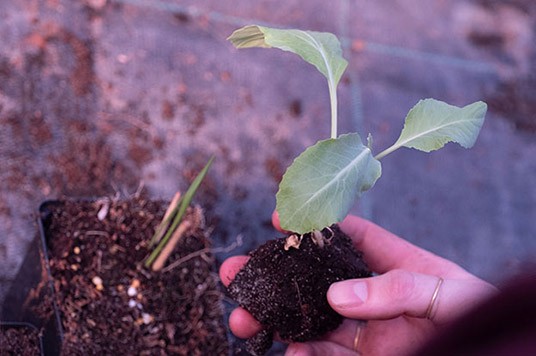Trouble and dangers of the grow phase
Growing outdoors for beginners. Your plants are in the outdoors soil and their getting free light and moisture. That’s awesome, but that same free air also has some dangers. You can’t constantly protect your plants from pests, for example. And they could run into nutrient deficiencies. For the bigger elements that’s unlikely, especially if you’re adding base nutrients. But smaller elements could be a problem. Sometimes they’re simply not present in the soil or your soil or substrate has the wrong pH-value for the plant to take up a specific element.

Do you want to know more about growing outdoors?
In the download area, you may find the complete guide "Growing outdoors for beginners - Part II" in 8 languages (NL-EN-ES-FR-DE-IT-PL-CZ). Check it out right away.
Pests
There are a number of insects and fungi that are very fond of plant leaves, roots and other plant parts. They use plants as food or as places to lay their eggs. It’s fine that nature’s being nature, but we’d really like to protect our plants and harvest. But before we can deal with the beasties, you need to know what you’re dealing with. Read our grow topics on plagron.com for more information on common types of pests.
Deficiency symptoms
How do you recognize if a plant is missing a certain element? Each deficiency has its own symptoms. If you know what to look for, it’s easy to keep track of things. Below, we’ll describe the symptoms for deficiencies of the biggest elements.
Nitrogen deficiency. This is quickly recognized by yellowing leaves. The chlorophyll disappears from the leaves, starting with the older leaves at the bottom.
Phosphorus deficiency. The first sign of a lack of phosphorus is a sudden growth stop. Roots will stop their development and leaves will no longer grow. The leaves might also develop a reddish glow.
Potassium deficiency. Plants with shortage of potassium are smaller and a lot weaker. Their leaves look unhealthy with yellowing or brownish veins and brown spots as well as a dry rim.
There are a lot of smaller elements and macro elements, so it’s not possible to describe all the deficiency symptoms in detail. A good rule of thumb is the following: if your plant has growth problems, discolorations or if leaves are drying up, it’s best to look up these symptoms and find out which deficiency fits. Read our grow topics on plagron.com for more information.